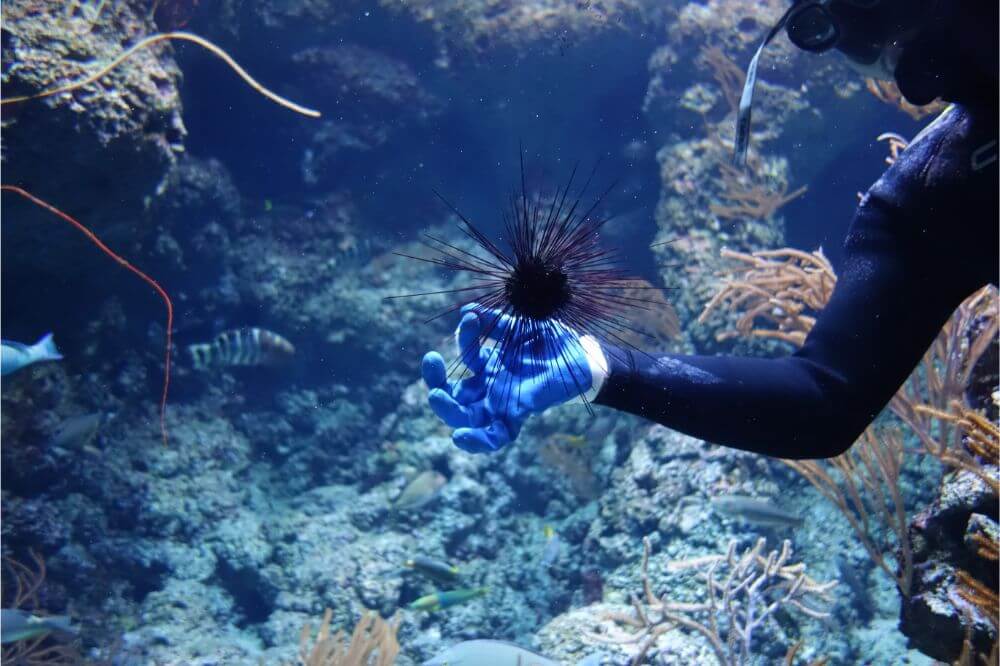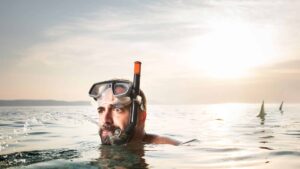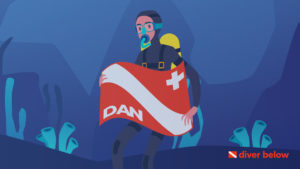One animal you might see while scuba diving is the sea urchin. Sea urchins are some of the most fascinating creatures you will encounter when scuba diving around coral reefs and rocky coastal waters.
They are pretty easy to find and identify, and in case it matters to you, many people actually find them quite tasty.
First, however, let’s talk about what you need to be aware of when it comes to scuba diving and sea urchins.
Contents
Sea Urchins – Basic Facts
Sea urchins are a species within the Echinodermata family.
These are generally pretty small creatures ranging from 1 to 4 inches or 3 to 10 centimeters in diameter, depending on the species.
At this time, over 950 known species of sea urchin have been discovered, and there are likely many hundreds more.
Sea urchins are usually s round in shape, they have a tough shell covered in spines, and they crawl along very slowly using their tube-like feet.
On a side note, there are some flat sea urchins and those with irregular shapes that have shorter and fewer spines (or no spines).
Many of these are known as sand dollars.
Are Sea Urchins Dangerous?
There is not much cause for concern if you are worried about diving with sea urchins or even fishing for them.
Most sea urchins are totally harmless as far as humans are concerned.
However, some will bite, and although it can hurt, it’s not dangerous.
A few sea urchin species have venom that is secreted from their spines, but unless you have severe allergies, it may hurt, but it won’t kill you.
So generally speaking, unless you pick up a sea urchin and squeeze with your bare hands, you should be fine.
Common Types of Sea Urchin You May Encounter
As mentioned above, there are over 950 different species of sea urchin, so we won’t list them all.
That said, we want to provide a short list of the most common sea urchins you may encounter when scuba diving.
- Common sea urchin AKA sea chestnut
- Large sea urchin AKA the European edible hedgehog
- Green sea urchin AKA the shore sea urchin
- Red pencil urchin
- Purpleheart urchin
- Fire urchin
- Black sea urchin AKA long-spined urchin
- Heart-shaped sea urchin
- Ericillo sea urchin
- Pacific sand dollar
- Five-hole sand dollar
Best Places to Dive for Sea Urchins
If you want to see sea urchins, you need to dive in the right places. Sea urchins can be found in many places, especially around coral reefs and coastal areas.
That being said, sea urchins can be found worldwide, including in the coastal waters off of Europe, Asia, Africa, Australia, North America, and South America.
You can find sea urchins in the Antarctic, aptly named the Antarctic sea urchin.
As long as you are near a coast with rocky areas and maybe a bit of coral, you should have no problems spotting sea urchins on your next dive.
In addition, sea urchins can also be found much deeper, but that said, you won’t be scuba diving down to more than a few dozen feet anyway.
How to Fish for and Handle Sea Urchins
Let’s go through a quick guide on how to fish for and handle sea urchins while scuba diving.
Once again, it is best to stick to coastal areas, especially places with lots of rocks, as sea urchins can be found in waters as shallow as 15 feet and usually attach themselves to rocks.
When handling a sea urchin, wear very thick rubber gloves that will keep the spines from puncturing your hands.
Moreover, if you plan to hold them, be sure you know the species you are touching because you don’t want to handle poisonous ones.
If you are looking for sea urchins for consumption or other purposes, bring along a foldable knife so you can pry them from the rocks.
Pro tip: If you are looking for edible sea urchins, look for those that have either small stones, shells, or seaweed attached to the tops of their shells and that are green, red, or purple.
To keep the sea urchins alive as you hunt for more, put some rocks in a bucket so it sinks and attach the bucket to a buoy using a thick rope.
This will allow you to keep the urchins in place as you look for more.
Wrapping Up
If you are interested in scuba diving for sea urchins, they can be found all over the world off of nearly any coast.
They look absolutely stunning, and there are hundreds of species to check out.





